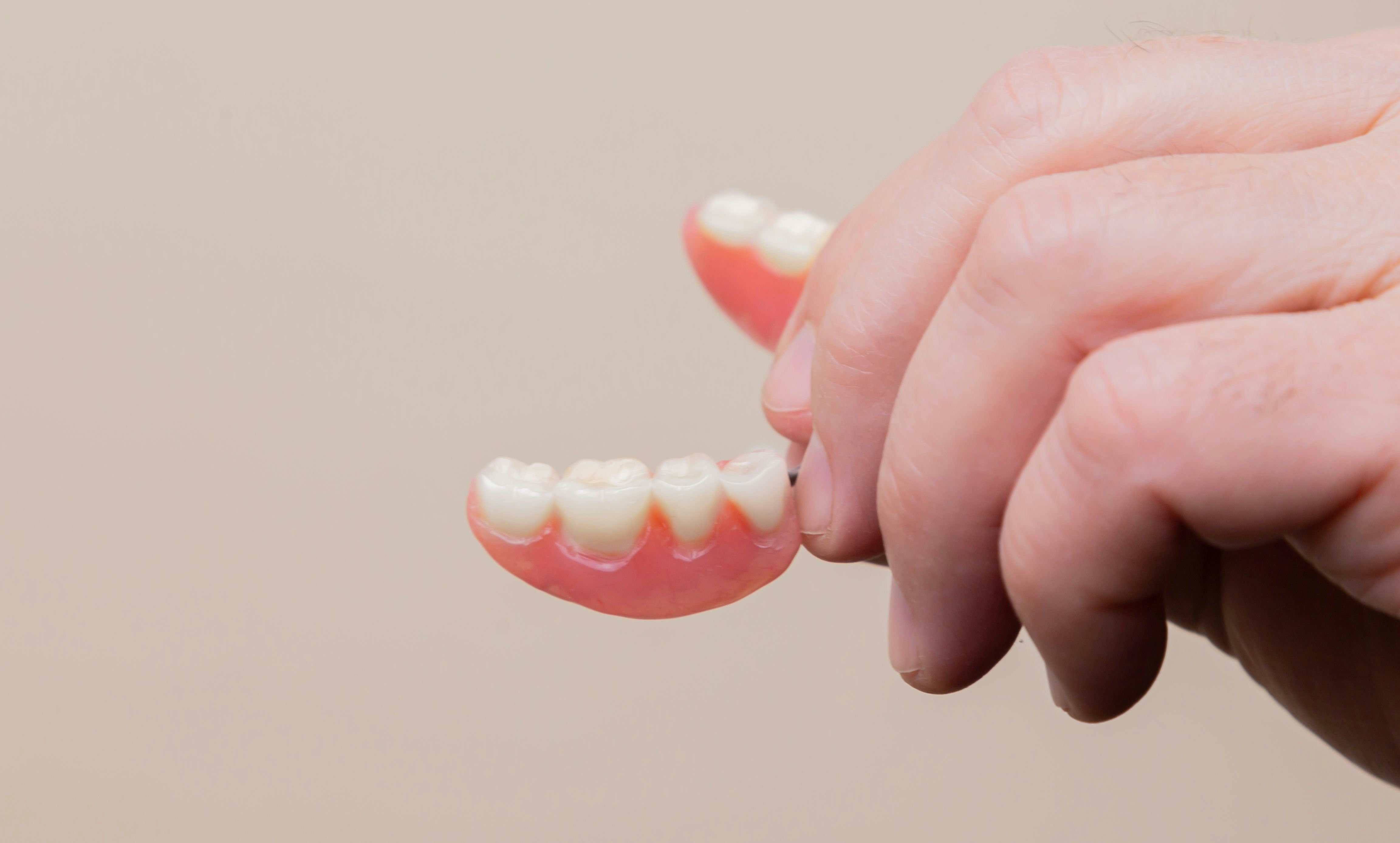Other Treatment Methods
- Dental anxiety / pain-free dental treatment
- Dental prosthesis
- Digital dentistry
- Gum treatment
- Orthodontics
- Pediatric dentist
- Prophylaxis / Professional Teeth Cleaning (PZR)
- Root canal treatment / Endodontics
- Sports dentistry
- Teeth grinding and CMD (Craniomandibular Dysfunction)
- Teeth whitening / Bleaching
- Veneers (dental shells)

Dental implants
A dental implant is an artificial tooth root inserted into the jawbone in the form of a screw. The implants fuse with the surrounding bone to form a solid, extremely resilient unit. An individual crown is created in a dental laboratory for this purpose, which is then screwed and also cemented onto the implant in practice. The result is a stable, fully functional, and naturally looking tooth.
Dental implants – the artificial tooth roots
A dental implant is an artificial tooth root inserted into the jawbone in the form of a screw, usually made of titanium. The implants fuse with the surrounding bone within 3 to 6 months to form a solid, extremely resilient unit. After the implants have healed, the entrance of the implant is exposed from the gum and an impression of the situation is made for the dental laboratory.
Alternatively, the digital impression is possible directly after implantation, where a scanner transfers the exact position of the implant. In the laboratory, based on this impression, an individual abutment and crown for the implant are manufactured. These lab parts are then screwed and also cemented onto the implant in practice.
Screw implants
A rotationally symmetric screw implant with a circular cross-section has become established as an implant shape. This strains the patient less today than earlier implantation techniques and very rarely leads to complications in wound healing. In addition, screw implants have the advantage that they "fix" immediately in the bone due to their thread. This shortens the healing time because only a little bone needs to "grow back".
Dental implants are made of pure titanium. Titanium has a high biocompatibility that does not cause allergic or foreign body reactions. Unlike other materials, titanium forms a direct molecular connection with the bone. Predominantly, two-piece dental implants have become established because they can best adapt to the given conditions due to their combination possibilities between the root and crown parts. Multi-piece implants consist of the implant body anchored in the bone and the head part, which accommodates the superstructure. The two parts are mostly screwed together. The structures attached to it (crowns, bridge or denture anchors) are usually screwed, but also cemented or glued.
Before the operation
At the beginning, models and X-ray documents (3D representation) are created to determine the optimal position for the implant and the width of the bone. Based on the documents, the implantation is then discussed exactly. Any existing periodontitis must be successfully treated beforehand.
Implantation procedure
The implantation usually takes place on an outpatient basis in the practice. Local anesthesia is usually sufficient. For very large procedures and anxious patients, treatment in twilight sleep or general anesthesia is recommended. In the area to be implanted, the gum is folded back and the bone exposed. Then, various spiral drills are used to gradually create a canal for the implant and the implant is screwed into the bone. If bone is missing around the implant, it is rebuilt at the same time as the implantation using foreign or autologous bone. Finally, the gum is replaced and finely sewn up. The implant and the operation area should heal stress-free and pressure-free for 3 to 6 months.
Risks of a dental implant
As with any operation, infection may rarely occur in the implantation area. Therefore, oral hygiene and patient cooperation should be good to very good, since otherwise, the increased number of bacteria significantly raises the risk of infection. Basically, the risk of failure is significantly higher for smokers. Diabetics must be well-controlled to reduce the risk of inflammation to a manageable level. Dental implants are also still at risk of inflammation later on, which can lead to a loss of bone tissue around the dental implant. This peri-implantitis can ultimately cause the implant to fail. However, in its early stages, it can often be successfully treated through surgical intervention combined with antibiotic therapy.
After the dental implant
Swelling may occur in the first 3 days, which subsides after 6 days. Bruises are usually no longer visible after about 10 days. In the first few days, there is a slight pain that can be well managed with medication. Cooling the treated side also provides relief. When sleeping, the head and upper body should be elevated, and one should not sleep on the treated side of the head. In the first few days, sports and physical exertion should be avoided. When Eating should avoid grain-containing and dairy foods should be avoided. Smoking, caffeinated drinks and Alcohol should be avoided.
Follow-up after the dental implant
The stitches are removed after a week. If possible, a custom-made temporary restoration can be fitted. The patient also receives detailed instructions on how to best clean the teeth.
After impressions and laboratory work after 14 days, the final prosthesis is adjusted to the implants. The second follow-up appointment takes place after just under 2 months. It's enough to visit the practice for a check-up two to three times a year after that. During Professional Dental Cleaning, the prosthesis and the penetration sites of the implants are cleaned using a special powder and gel. An X-ray for control purposes is useful every 1 to 2 years.
Other Treatment Methods in this Department
Experts for this Treatment Method

- Aesthetics & Function in Dentistry
Dr. Dr. Ákos Fehér
Fehér Dental Team, Smile Lounge
- Aesthetics & Function in Dentistry
Zahnarzt Robert Svoboda M.Sc.
ZahnGesundheit Oberkassel
- Aesthetics & Function in Dentistry
Dr. Sven Tomalla M.Sc.
DentalGut
- Aesthetics & Function in Dentistry
Dr. med. Martin Gollner
DentalZentrum Bayreuth
- Aesthetics & Function in Dentistry
Prof. Dr. med. dent. Florian Beuer (MME)
Charité – Universitätsmedizin Berlin Zahnärztliche Prothetik, Alterszahnmedizin und FunktionslehreAll Experts in this Department
Show All
- Aesthetics & Function in Dentistry
Dr. Dr. Ákos Fehér
Fehér Dental Team, Smile Lounge
- Aesthetics & Function in Dentistry
Dr. med. dent. Malte Schönrock M.Sc., M.Sc.
Dent Aesthetic
- Aesthetics & Function in Dentistry
Jan Kurtz-Hoffmann
Zahnärzte im Roßbachpalais
- Aesthetics & Function in Dentistry
Dr. med. dent. Tore Thomsen
Zahnarztpraxis Dres. Thomsen & Kollegen
- Aesthetics & Function in Dentistry
Dr. med. dent. Oliver Brendel
Dinkelacker & Brendel
- Aesthetics & Function in Dentistry








